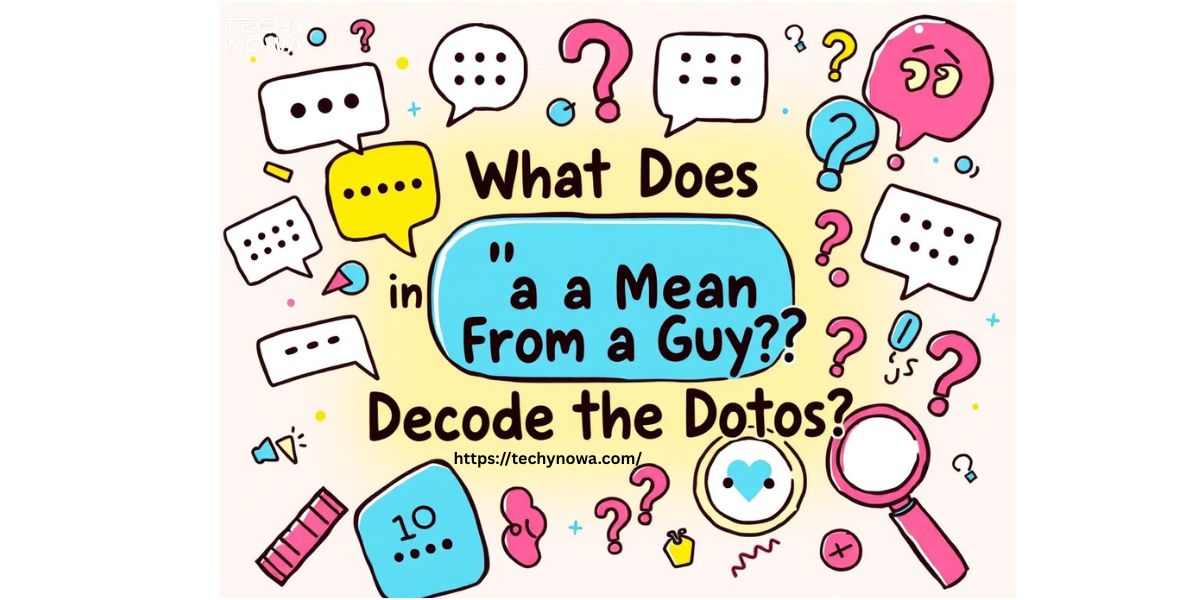The dots “…” in a text can say more than words. When a guy uses them, it often adds mystery or emotion. It might mean he is thinking, unsure or teasing you a little. Sometimes, it shows hesitation or leaves a message open-ended. In 2025 texting culture, these dots can reflect deeper feelings. Let’s decode what “…” really means when a guy texts it.
What Does “…” Mean in a Text from a Guy?
When a guy texts “…”, it can mean many things. He might be pausing to think or holding back words. Sometimes, it adds suspense or a flirty tone. It’s his way of keeping the conversation open and interesting.
1. A Pause for Thought
When a guy uses “…”, it often means he’s thinking. He may be choosing the right words to say next. It shows he is not rushing his message. This pause can make his text feel more thoughtful. It is his way of adding a calm break in the chat.
2. Hesitation or Uncertainty
Sometimes, “…” shows he is unsure what to say. He might be nervous or afraid to say too much. It can reflect doubt or mixed emotions. This small sign can reveal a lot about his feelings. It often means he is trying to be careful with his words.
Related guide: EYP Meaning Slang: The Complete 2025 Guide To Its Usage, Definition & Alternatives
3. Creating Suspense or Curiosity
Guys sometimes use “…” to keep you guessing. It builds a little mystery in the conversation. You may feel eager to know what comes next. This trick keeps your attention on his message. It is a playful way to make texting more exciting.
4. Implying Something Unsaid
The “…” can mean there is more behind his words. He might be hinting at feelings he can not express. It leaves room for you to read between the lines. This makes the message feel deeper and emotional. It is his subtle way of saying more without saying it.
5. Ending a Thought Softly
When a guy ends a text with “…”, he may want to sound gentle. It softens the message and avoids sounding too direct. He might not want to end the chat suddenly. The dots make his words feel calm and open. It is a way to keep the tone friendly and relaxed.
Related guide: What Does RS Mean In Text? Complete Guide With Polite Alternatives 2025
Tone Matters: How the Ellipsis Changes Based on Mood
The meaning of “…” can change with tone and mood. If he is happy, it may sound playful or teasing. But if he is upset, it can feel cold or distant. Tone decides whether the dots sound caring or confusing. For example, “I guess that’s fine…” can sound either sad or annoyed.
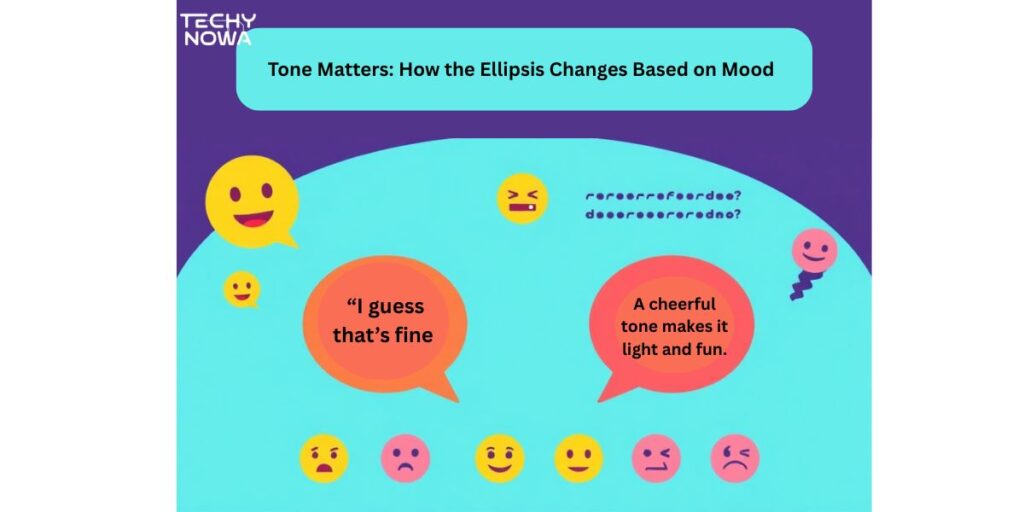
In texting, mood gives the ellipsis its real feeling. A cheerful tone makes it light and fun. A serious tone can make it seem tense or uncertain. The same three dots can express many emotions. That is why understanding context is always important.
Related guide: TM In Text Messages: Meaning, Usage, And Best Alternatives 2025
How to Know What a Guy Really Means by “…”
| Situation | What It Might Mean | How to Respond |
| He pauses mid-text | He is thinking or unsure what to say | Wait or ask a gentle question |
| After a flirty message | He is teasing or hinting something | Respond playfully |
| After a serious talk | He feels emotional or hesitant | Be understanding |
| At the end of a message | He wants to keep the chat open | Continue the conversation |
| Used often in chats | It is part of his texting style | Notice his tone and pattern |
1Smart Replies to “…” in a Text
Smart replies to “…” can keep the chat fun and clear. You can reply with humor to lighten the mood. If it feels serious, ask what he really means. A thoughtful response shows you care and understand his tone.
🔹 1. “You okay?”
Shows care when he seems unsure. Example: “You have been quiet… you okay?”
🔹 2. “Haha, what does that mean?”
Keeps the tone light and playful. Example: “Haha, what does that mean…?”
🔹 3. “Are you going to finish that sentence or leave me hanging?”
Adds humor while asking for clarity. Example: “Finish your thought or keep me guessing?”
🔹 4. “I feel like there’s more you’re not saying…”
Gently asks for honesty. Example: “I feel like there is more behind those dots…”
🔹 5. “Hmm… tell me more.”
Encourages him to open up. Example: “Hmm… tell me what you really mean.”
🔹 6. “That’s it? Just dots?”
Playfully challenges his vague reply. Example: “Just dots? Come on, say more!”
🔹 7. “Now I’m curious!”
Expresses interest and keeps chat going. Example: “Now I’m curious… what is next?”
🔹 8. “Is there something I should know?”
Seeks truth in a calm way. Example: “Is there something you are trying to say?”
🔹 9. “I feel like I’m missing something here.”
Points out confusion softly. Example: “I feel like I’m missing part of the story…”
🔹 10. “I’m listening…”
Invites him to share more. Example: “I’m listening… go on.”
🔹 11. “Deep thoughts?”
Lightheartedly hints he’s thinking hard. Example: “Deep thoughts or just dramatic dots?”
🔹 12. “You can tell me.”
Builds trust and comfort. Example: “You can tell me what’s really going on.”
🔹 13. “Say it with your chest 😂”
Adds humor to ease tension. Example: “Say it with your chest 😂 do not hold back!”
Why Do Guys Use “…” Instead of Saying What They Mean?
Some guys use “…” to avoid saying too much. It helps them show feelings quietly. They may feel shy or unsure. For example, I was thinking about you… feels gentle. It keeps the message soft and open.
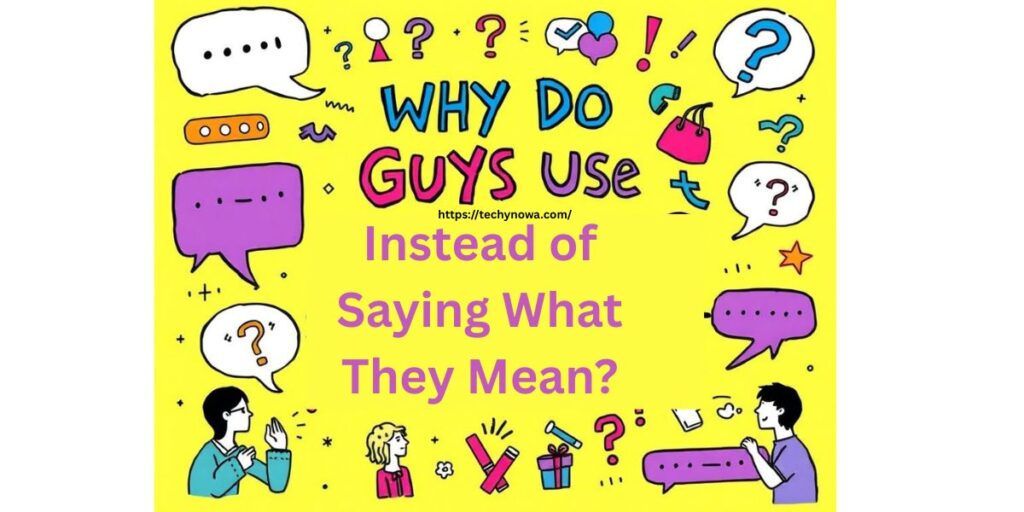
Others use “…” to make texting fun. It adds a pause and mystery. He wants you to guess his meaning. For example, Maybe we should hang out… sounds teasing. It keeps the chat playful and warm.
Polite, Professional, and Casual Alternatives to “…”
You can replace “…” with clear words in texts. In polite chats, try saying please or thank you. For professional messages, use full sentences to stay formal. In casual talks, emojis or short pauses can work better.
✅ Polite Alternatives
- Use kind words like “please” or “thank you.”
- Add “if you don’t mind” for soft requests.
- Say “I appreciate it” to sound gentle.
- End with “have a great day” for warmth.
✅ Professional Alternatives
- Use clear sentences instead of dots.
- Say “I’ll get back to you soon.”
- Try “let me know your thoughts.”
- Keep tone respectful and direct.
✅ Casual Alternatives
- Use emojis for emotion 😊.
- Try short phrases like “you know?”
- Add “haha” to sound friendly.
- Use pauses naturally in messages.
Psychological Interpretation: Is It a Sign of Emotional Avoidance?
Sometimes, using “…” can show emotional avoidance. A guy may use it when he doesn’t want to explain his feelings. It helps him keep distance while still staying in touch. The dots act as a soft wall between emotions and words. For example, he might text, “I guess that’s how it is…” to avoid a deep talk.
In this way, “…” becomes a subtle escape. It lets him hide his real thoughts behind pauses. He may fear conflict or emotional exposure. The dots make his message seem calm but unclear. It’s a quiet sign that he’s not ready to open up.
Contextual Breakdown: When to Be Concerned
Sometimes, context can reveal when a situation needs attention. If signs feel unusual or constant, it may show something deeper. Trust your instincts when things do not seem right. Seeking advice early can help prevent bigger issues later.
🚩 Red Flag Use
Sometimes, words or actions can signal a problem. If someone uses a phrase to avoid responsibility, it is a warning sign. It may show lack of care or honesty. Pay attention to tone and timing. These small hints can reveal true intentions.
✅ Harmless Use
Not every use of a phrase is negative. Sometimes, people say things casually or to lighten the mood. Their intent is friendly, not dismissive. Look at the overall conversation for clues. If the tone feels kind, it is usually safe.
How to Ask for Clarity Without Sounding Defensive
It is okay to ask for clarity when you feel unsure. Stay calm and use a polite tone. Focus on understanding, not proving yourself right. Phrases like “Can you please explain that a bit more?” sound open and respectful. This keeps the talk smooth and positive.
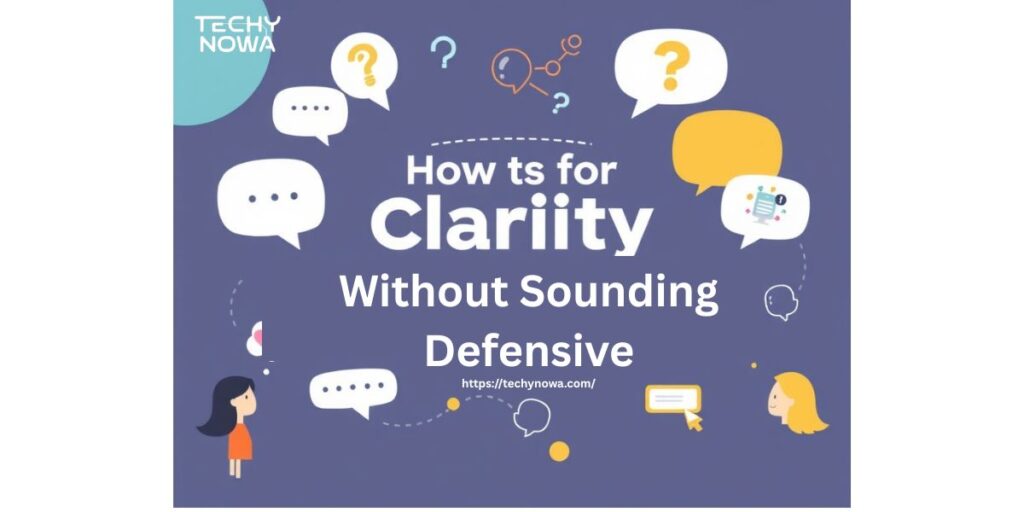
For example, say someone gives confusing feedback. You can reply, “I just want to be sure I understand, could you share what you meant by that?” This shows interest, not defensiveness. Simple questions like this build better communication. It helps avoid misunderstandings and keeps respect on both sides.
Expert Insights on Texting and Emotions
Experts say texting can easily mix up emotions. Without tone or facial cues, messages can sound cold or unclear. People often read texts based on their mood. This can lead to small misunderstandings. For example, a short “K” might feel rude even if it’s not meant that way.
Professionals suggest adding warmth to messages. Emojis or kind words can show care and tone. Clear replies help avoid confusion. It is also smart to pause before reacting emotionally. Simple habits like these keep digital talk more positive.
Trusted Tips on How to Respond
When someone uses a tricky phrase, stay calm and think before replying. Keep your tone polite and clear. Try to understand what they truly mean. Respond with kindness, not anger. For example, if someone says “FWIW,” you can reply, “Thanks, I appreciate your view.”
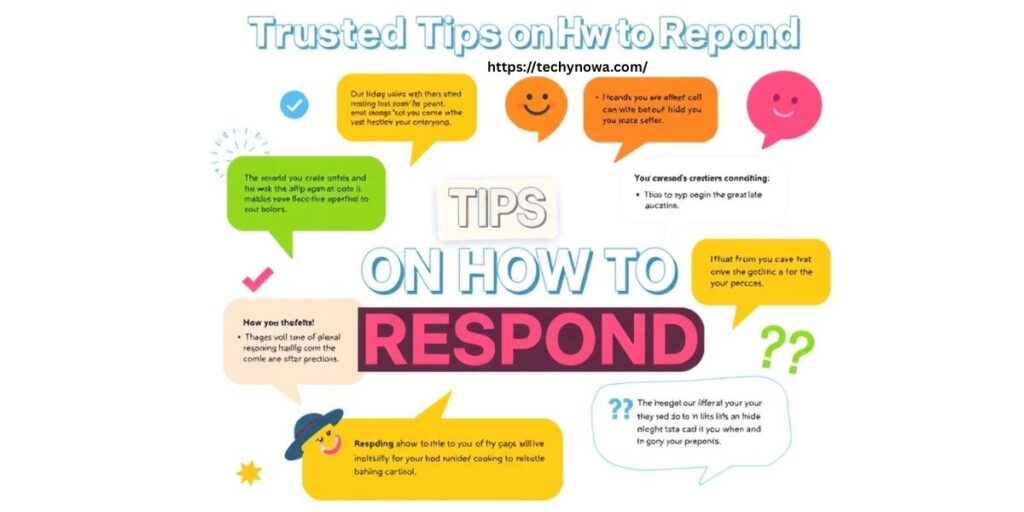
A thoughtful reply can build better communication. It shows respect and emotional control. Avoid reacting too quickly or harshly. Ask questions if something feels unclear. This helps you keep the talk honest and positive.
Real-Life Examples and Personal Experience
In daily life, we often face mixed signals in conversations. For example, a friend might say something that feels unclear. Sometimes, it is just their way of expressing comfort. Other times, it can hide real emotions. Learning to notice these moments helps us respond better.
I have also faced situations where words meant more than they seemed. At first, I did not think much about them. But later, I realized the meaning behind the tone. It taught me to listen more carefully. Small experiences like this help build understanding.
Frequently Asked Questions
1. What does “real-life example” mean?
It means a true situation from daily life that helps explain an idea clearly.
2. Why are real-life examples important?
They make information easy to understand and connect it to real situations.
3. How can personal experience help in learning?
It builds trust and shows genuine understanding of the topic.
4. Can personal experiences be used in writing?
Yes, they add authenticity and make your writing more relatable.
5. What’s the difference between real-life and personal examples?
Real-life examples can come from anyone, while personal ones are from your own life.
6. How do real examples make content stronger?
They give proof, show real outcomes, and make readers believe the message.
7. Should I always include personal experience?
Only if it fits naturally and supports your main point clearly.
Conclusion
When a guy uses “…” in a text, it can mean many things. Sometimes, it shows hesitation or deep thought. Other times, it adds mystery or emotion. The meaning depends on tone and context. Paying attention to his overall texting style helps. Always look at the full message, not just the dots.
Communication can be tricky in texts. The “…” can express feelings words can not. It might show care, confusion, or waiting for your reply. Try not to jump to conclusions too fast. Ask or observe before assuming meaning. Understanding intent makes texting clearer and smoother.
